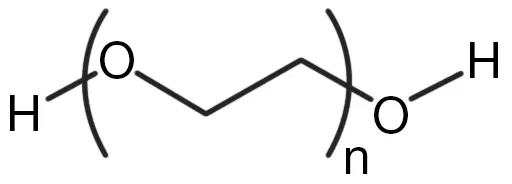
Peptide PEGylation, the covalent attachment of polyethylene glycol (PEG) chains to therapeutic peptides, represents a cornerstone strategy in modern drug delivery. This chemical modification is primarily employed to overcome the inherent limitations of native peptides, such as rapid clearance, poor stability, and immunogenicity. By creating a protective, hydrophilic cloud around the peptide, PEGylation can significantly enhance circulation time and bioavailability. However, the decision to have a peptide PEGylated is multifaceted, requiring a careful balance between its well-documented benefits and emerging challenges, such as the induction of anti-PEG antibodies.
Key Takeaways
- PEGylation enhances pharmacokinetics by increasing hydrodynamic size, reducing renal clearance, and extending plasma half-life.
- It improves proteolytic stability by shielding the peptide from enzymatic degradation and can reduce immunogenicity.
- Critical parameters for a successful conjugate include the molecular weight of PEG, its architecture (linear or branched), and the site of conjugation.
- PEGylation can lead to a significant loss of biological activity, necessitating a trade-off between improved pharmacokinetics and retained potency.
The Compelling Advantages of Peptide PEGylation
Enhanced Pharmacokinetics and Pharmacodynamics
The primary motivation for PEGylating a therapeutic peptide is to profoundly improve its pharmacokinetic profile. The attachment of a PEG polymer increases the peptide’s apparent molecular weight and hydrodynamic volume, which directly impedes its filtration and excretion by the kidneys . Consequently, PEGylated peptides exhibit a markedly extended circulation half-life, sometimes by orders of magnitude, leading to less frequent dosing and improved patient compliance.
Increased Stability and Reduced Immunogenicity
A significant barrier to the development of peptide therapeutics is their susceptibility to proteolytic degradation by ubiquitous enzymes in the bloodstream and tissues. The PEG chain, along with its associated water molecules, forms a protective shield around the peptide core, sterically hindering the access of proteases . This shield also masks antigenic determinants on the peptide’s surface, rendering it less recognizable to the immune system. This dual action of enhanced stability and reduced immunogenicity makes PEGylation a powerful tool for improving the drug-like properties of biologic therapies.
Find more peptide modifications here.
Navigating the Challenges and Limitations of PEGylated Peptides
Conformational and Activity Considerations for PEGylated Peptides
A critical drawback of PEGylation is the potential for diminished biological activity. The bulky PEG chain can sterically block the peptide’s active site or interfere with its binding to the target receptor. The degree of activity loss is highly variable and depends on the location of the conjugation site and the size of the PEG polymer. While the significant extension of half-life often compensates for a reduction in specific activity, a substantial loss can render the conjugate therapeutically irrelevant. Therefore, optimizing the conjugation strategy is paramount to preserving bioactivity while gaining stability.

A Decision Framework for PEGylated Peptides
When PEGylation is Highly Advisable
PEGylation should be a primary consideration when the lead peptide candidate demonstrates high in vitro potency but fails in vivo due to excessively rapid clearance or instability. It is particularly suitable for peptides requiring less frequent dosing than once-daily, those intended for chronic conditions, and those that are highly immunogenic in their native form. The technology is well-established for a range of therapeutics, from proteins and peptides to aptamers and small molecules.
Key Design Parameters for Successful PEGylation
The success of a PEGylated product hinges on several strategic design choices:
Molecular Weight and Architecture
The size of the PEG polymer is a critical determinant. While larger PEGs (e.g., 20-40 kDa) provide superior half-life extension and shielding, they are also more likely to induce anti-PEG antibodies and can more significantly impact bioactivity. Furthermore, the choice between linear PEG and branched PEG can influence the conjugate’s hydrodynamic volume, shielding capacity, and binding affinity .
Site-Specific Conjugation
Early PEGylation methods often resulted in heterogeneous mixtures of conjugates modified at various amino acid residues. Modern approaches favor site-specific PEGylation, which targets a unique site on the peptide (e.g., a specific cysteine thiol via maleimide chemistry) . This yields a more consistent and defined product with more predictable pharmacokinetics and a better-preserved biological activity profile.
Summary of Key Considerations
| Factor | Considerations | Impact |
|---|---|---|
| Peptide Stability | Susceptibility to proteolysis, short plasma half-life. | PEGylation provides a protective shield, drastically extending half-life. |
| Target Dosing Regimen | Requirement for daily vs. weekly or monthly dosing. | Ideal for enabling less frequent, more convenient dosing. |
| Immunogenicity | Potential for immune recognition of the native peptide. | Can reduce peptide immunogenicity, but may introduce anti-PEG antibodies. |
| Bioactivity Retention | Location of active site and conjugation sites. | Risk of reduced potency; requires careful site-specific optimization. |
Find out more about peptide synthesis here.
Frequently Asked Questions (FAQ)
What are the most common chemical methods for PEGylating peptides?
The most common strategies involve coupling activated PEG derivatives to specific amino acid side chains. Amine-reactive PEGs (e.g., PEG succinimidyl carbonate) target lysine residues and the N-terminus, while thiol-reactive PEGs (e.g., PEG-maleimide) allow for site-specific conjugation to cysteine residues. Carbonyl-reactive and “click chemistry” approaches are also widely used.
How does PEGylation affect the manufacturing process?
PEGylation introduces significant complexity into the manufacturing process. It requires stringent control to ensure consistent PEG attachment and can complicate downstream purification to separate mono-PEGylated, multi-PEGylated, and unreacted species. This can impact the overall cost and scalability of production.
Can PEGylation be used for targeted drug delivery?
Absolutely. PEG is a key component in advanced drug delivery systems. For example, PEGylated liposomes use the PEG layer to create a “stealth” effect, avoiding rapid clearance and promoting accumulation in tumor tissues. PEG can also be functionalized with targeting ligands (e.g., antibodies, peptides) for active targeting.
Gao, Y., Joshi, M., Zhao, Z., & Mitragotri, S. (2023). <scp>PEGylated</scp> therapeutics in the clinic. Bioengineering & Translational Medicine, 9(1). https://doi.org/10.1002/btm2.10600
Veronese, F. M., & Mero, A. (2008). The Impact of PEGylation on Biological Therapies. BioDrugs, 22(5), 315–329. https://doi.org/10.2165/00063030-200822050-00004
